Your monthly update from SPAWN
Despite adapting and prevailing through these uncertain times, SPAWN is excited to report we experienced a really good propagation year! Our nursery is overflowing with native plants grown and cared for by countless volunteers, interns, students, and teachers throughout our community. Because of their hard work and selfless help, we are well positioned for all of our upcoming restoration projects and look forward to the future when we can heal the Earth by planting and nourishing in solidarity, together.
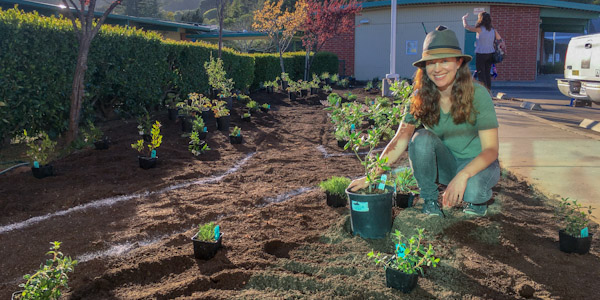
Monarch Waystations Added to Local Schools
During the most recent Xerces monarch butterfly count last winter, the population of western monarchs was estimated to be 28,418 individuals. While the population has held steady over the past year, a count done in 2018 showed an 86% decrease in the population between 2017 and 2018. To support the recovery of monarch populations, SPAWN is growing narrow-leaf milkweed and a selection of fall and spring-blooming nectar plants that provide monarchs the resources they need to survive. This year SPAWN donated plants and assisted three local schools in creating monarch waystations to support monarchs during their fall and spring migrations!
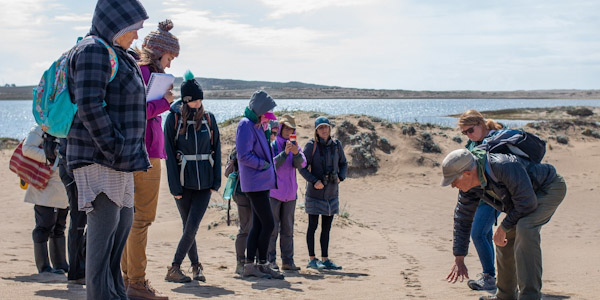
SPAWN Certifies the Next California Naturalists
The UC California Naturalist course is designed to teach various environmental skills – like plant identification and geological analysis – and to give people an opportunity to create deeper connections with our natural world. Our course at SPAWN did exactly that! The classroom took on different forms each weekend: students observed ancient flatworms in the Bolinas tide pools, tracked bobcats in Point Reyes National Park, and so much more! At the last class the naturalists shared their capstones which included citizen science, education, and stewardship projects supporting various environmental organizations in Marin County. Thanks to course coordinator Harry McGrath, the UC California Naturalist Program, and the incredible guest teachers, we have 15 brand new naturalists roaming Northern California, spreading their knowledge and appreciating nature!
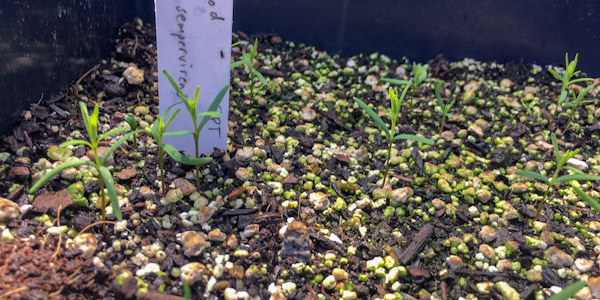
Students Grow Record-Breaking Redwood Seeds
With the help of teachers and students across Marin County, SPAWN's nursery had more than 1,000 redwood seedlings germinate at our partner schools this year! We want to thank the teachers who partnered with us this year: Julie Ryan of Glenwood Elementary, Laura Honda of Brookside Elementary, and Liz Gottlieb and Gina Neri of Marin Academy, along with all the participating students for growing so many redwoods. Redwood trees live for up to 2,000 years and redwood forests sequester more carbon than any other type of forest on earth. The actions taken by these teachers and students to care for these redwood seedlings will have a large impact on the future health of the planet as they support our 10,000 Redwoods program to mitigate the ongoing impacts of climate change.
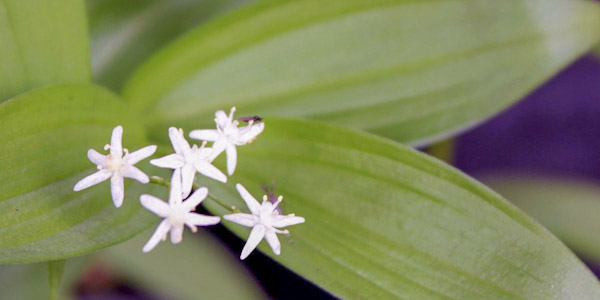
What's Blooming in the Nursery? Slim Solomon’s
Slim Solomon’s seal (Maianthemum stellatum) is a woodland plant that is widely dispersed throughout Marin County, California. The epithet stellatum refers to the plant’s star-shaped flowers which dangle from the tip of the stalk. The plant goes by many names including starry Solomon’s seal, starry false Solomon’s seal, star flower, and star-flowered Lily-of-the-Valley. This perennial plant reemerges each spring from fleshy underground rhizomes, with alternate leaves arranged along a smooth stem which zig-zags between the leaves.

TIRN Urges Congress to Address COVID-19 Causes: Wildlife Trade, Habitat Destruction
Turtle Island Restoration Network, SPAWN's parent organization, joined more than 100 organizations in urging Congress to address the wildlife trade and habitat destruction, the root causes of emerging zoonotic diseases like COVID-19 that have erupted over the past several decades in the United States and around the world. In a letter the groups noted that 60% of known infectious diseases in people can be transmitted from animals, and 75% of emerging zoonotic infectious diseases originate in wildlife. These emergent diseases have quadrupled in the past 50 years.

Eagle Scout Project Transforms Upstream Section of Tocaloma Floodplain
Prior to the COVID-19 outbreak, SPAWN volunteer Ryland Lewis completed his final Eagle Scout project by leading a volunteer group of Scout friends and their families to help SPAWN remove hemlock, Himalayan blackberry, and other invasive plants on a section of the upstream portion of our Tocaloma floodplain restoration project along Lagunitas Creek. Following removal of the invasive plants, the crew planted native plants which are good at quickly covering ground and forming thick root systems such as Santa Barbara sedge, creeping wildrye, and coyote brush. SPAWN would like to thank Ryland and his family and friends for helping to transform this section of invasive plants into a native plant oasis for wildlife!
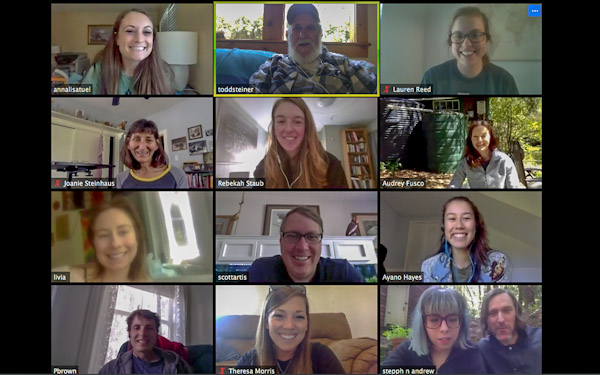
Photo of the Month: SPAWN Screenshot!
Amongst so much uncertainty and fear, we at SPAWN feel deeply grateful to be gazing at our beautiful healthy team all in one virtual place. As we learn to navigate this rapidly changing world, online meetings have allowed us to continue our species-saving work thousands of miles apart. When Todd, our executive director, said "say cheese" we smiled in gratitude to be together, if not physically, but emotionally and psychologically.
|
|
|